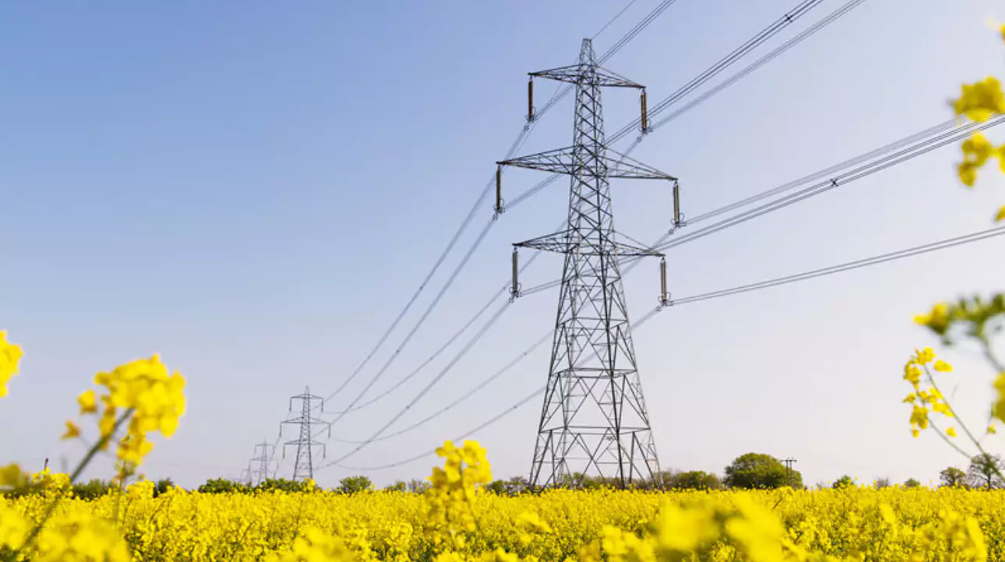Milestone reached: Renewables accounted for more than half of the UK’s electricity generation in 2024

Government statistics have confirmed that renewable sources accounted for more than half of the UK’s electricity generation in 2024, a new record.
The Digest of UK Energy Statistics, published by the Department for Energy Security and Net Zero (DESNZ), found that renewable technologies accounted for 50.4% of the UK’s electricity generation in 2024, a 4% increase on 2023 levels.
Fossil fuel outputs reached a record low of 31.8% of generation. Last year marked the end of coal-fired power generation in the UK. The last coal-fired power plant, Ratcliffe-on-Soar in Nottinghamshire, closed on 30 September after almost six decades of operation.
As such, gas was the primary form of fossil-derived generation at 30.4%, slightly outpacing wind a 29.2%. At the start of the year, the National Energy System Operator (NESO) stated that wind overtook gas as the UK’s biggest source of electricity in 2024, but the new digest offers a slightly different outlook.
Wind was the UK’s biggest clean power source, and accounted for 58% of all renewable electricity last year. Offshore wind enjoyed a record-breaking year, accounting for 17% – a 0.1% increase, with onshore wind (12.2%) enjoying a 1.1% year-on-year increase. Solar provided 5% (14.4TWh) and nuclear 14.25% (40.6TWh) of the UK’s electricity in 2024.
Commenting on today’s statistics, RenewableUK’s Deputy Chief Executive Jane Cooper said: “As today’s record-breaking figures show, renewables now account for the majority of our electricity generation and stand firmly as the backbone of the UK’s energy system. This is good news for billpayers, as renewables provide electricity at stable prices. Now we need to make sure we don’t just continue to build new wind, solar, and nuclear plants, but we reform our electricity markets and grid so that billpayers can get maximum benefit from the clean energy rollout.
“We have a golden opportunity to build on this historic milestone by attracting record levels of investment in wind and solar farms in this year’s clean energy auction, which will open next week. Up to £53bn in private investment could be secured this year to in new offshore wind projects alone.”
Imports and demand
The statistics confirm that overall energy demand was up from last year’s low but remained below pre-pandemic levels. The Government cites higher temperatures and energy costs as reasons for lower demand.
Domestic energy consumption increased 4% on the year before, with transport up 3%. Industrial consumption is at its lowest level since the 1950s and fell 1%, due to improvements in energy efficiency.
Transport demand is still 4% below pre-pandemic levels, while aviation fuel demand climbed by almost 10% and is 1.3% above pre-pandemic levels.
Oil production fell by 8.8 % and gas production fell by 10% which are at record lows for the century. Indeed, oil and gas production is 75% below the peak recorded in 1999 and 34% below pre-pandemic levels.
The UK remains a net importer and in 2024 dependency was measured at 43.7%, a 3.4% increase on 2023 levels.
Gas imports fell 8.4%, the lowest level since 2008. Liquefied Natural Gas (LNG) imports fell 47%, while crude oil imports rose 7.6% to the highest levels since 2019.
The statistics chime with preliminary data published by Carbon Brief at the start of the year, which found that renewables accounted for 45% of the electricity mix last year.
The increase in renewables was largely driven by the expansion of offshore wind and solar. Wind accounted for 26% of the UK’s electricity mix, making it the second-largest source of electricity in 2024, trumped only by gas-fired power stations, which took a 28% share. Solar, meanwhile, accounted for 4% of the electricity mix.
Carbon Brief stated that the power sector has “already been transformed over the past decade” but that delivering the Government’s clean power by 2030 target will be a “very significant challenge”.
The target entails 95% of generation being accounted for by renewables, biomass and nuclear, with gas peaking plants accounting for the remaining 5%.
The new Government data arrived on the same day that the Scottish Government approved the Berwick Bank offshore wind farm.
With an estimated capacity of 4.1 gigawatts (GW), it is expected to produce up to 11.2 terawatt hours (TWh) of electricity each year, potentially powering 17% of UK households.
The approval supports the UK’s wider ambition to deliver between 43GW and 50GW of offshore wind by 2030, forming a central part of national plans to reduce reliance on fossil fuels and achieve net-zero emissions.
More information: https://www.edie.net/milestone-reached-renewables-accounted-for-more-than-half-of-the-uks-electricity-generation-in-2024/


